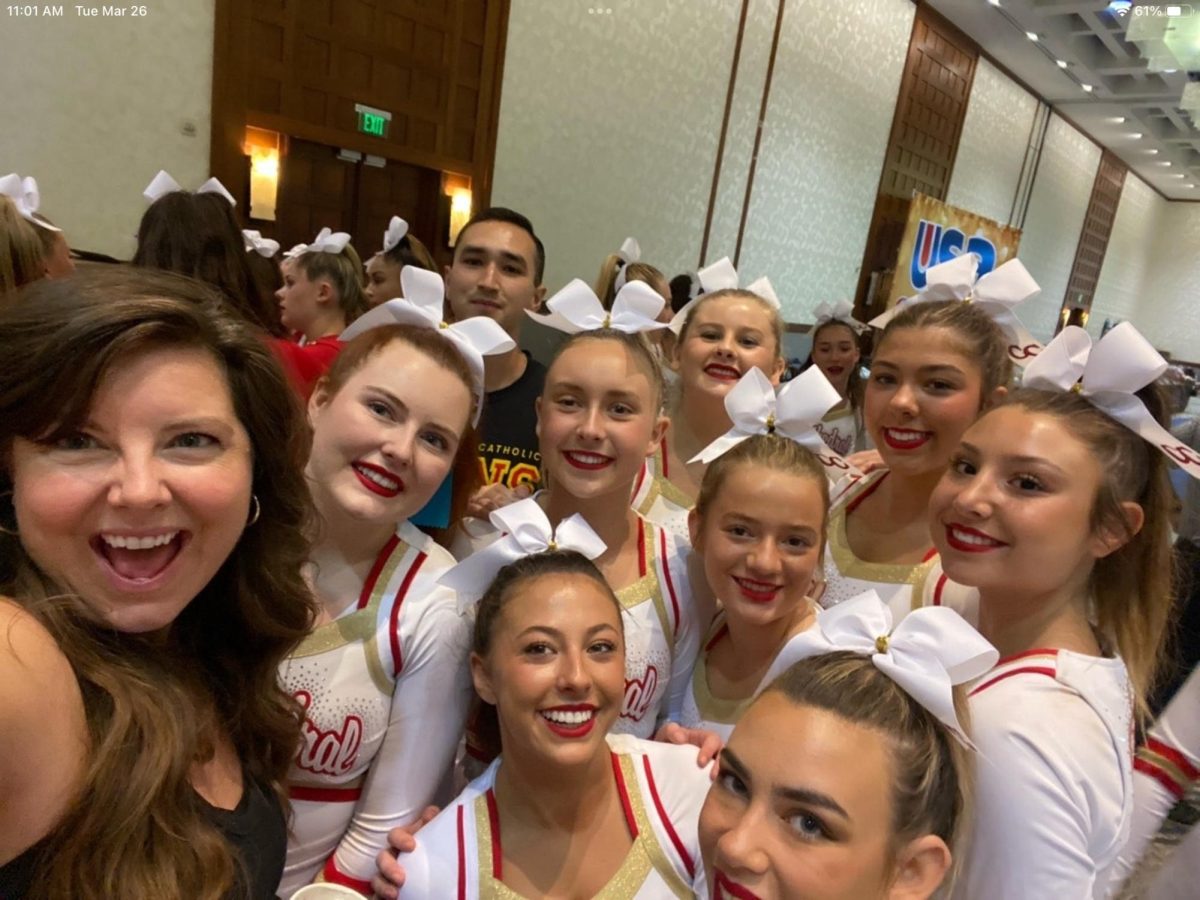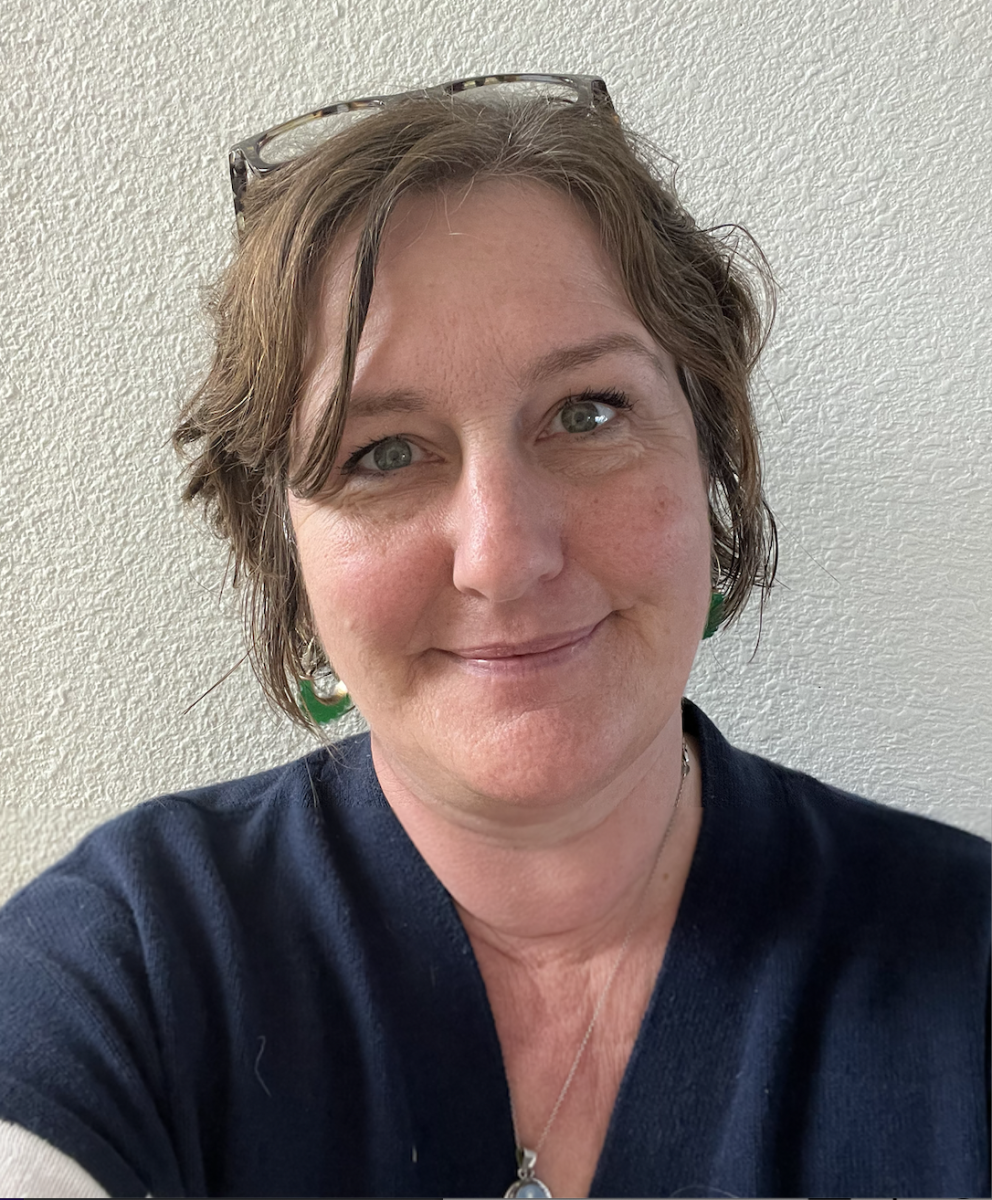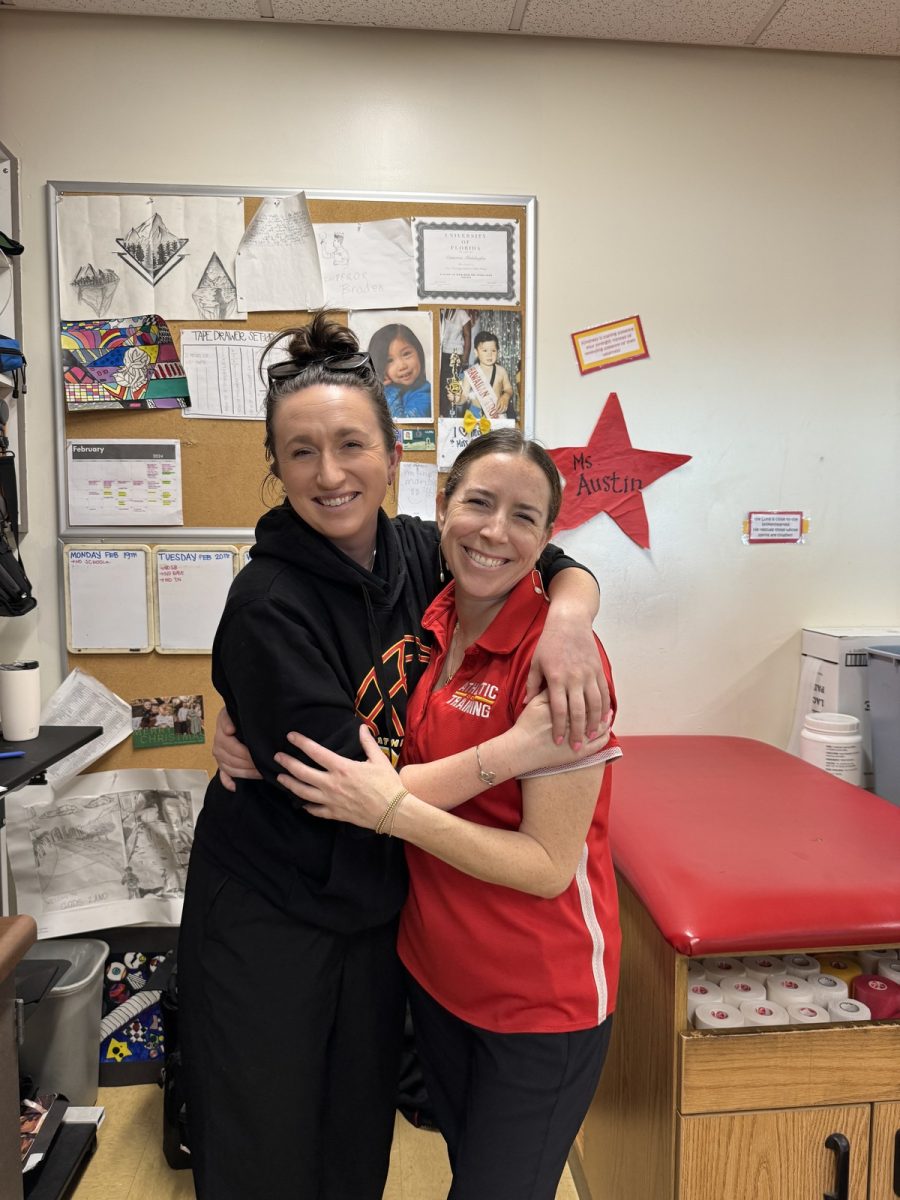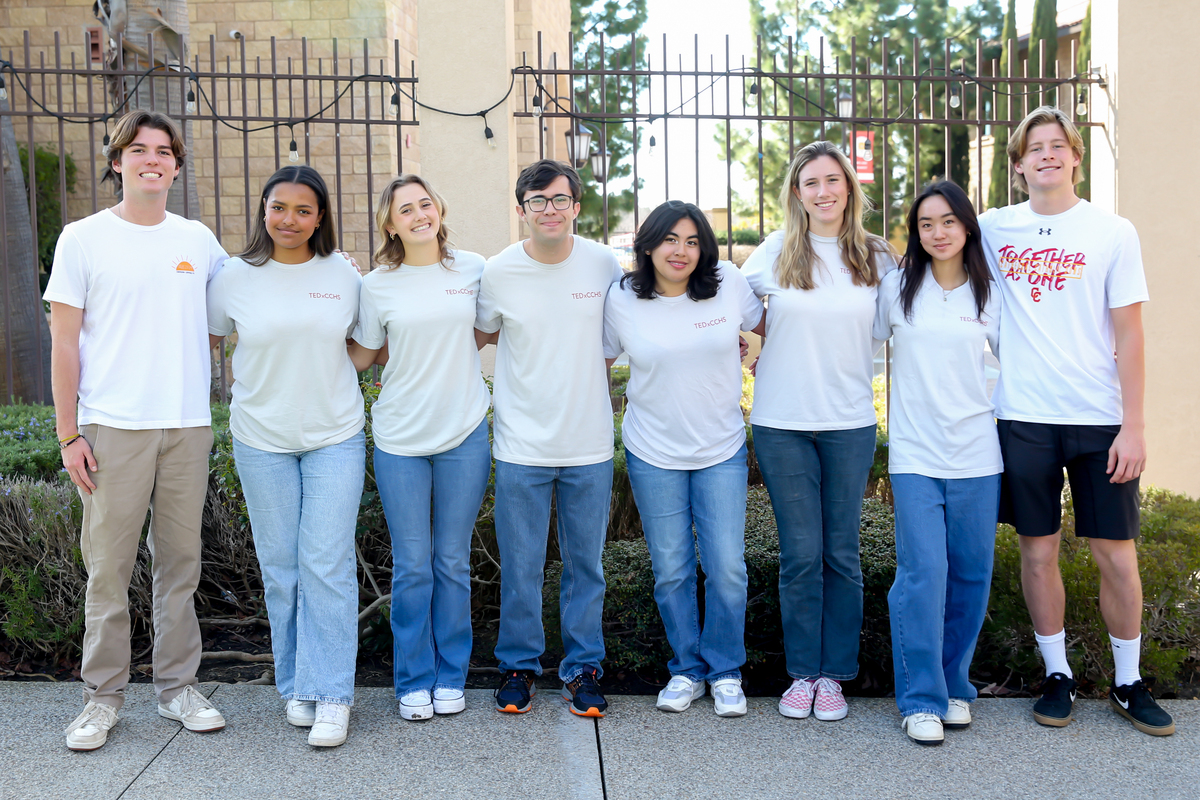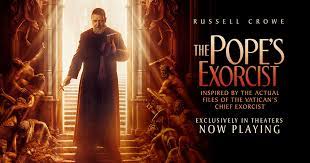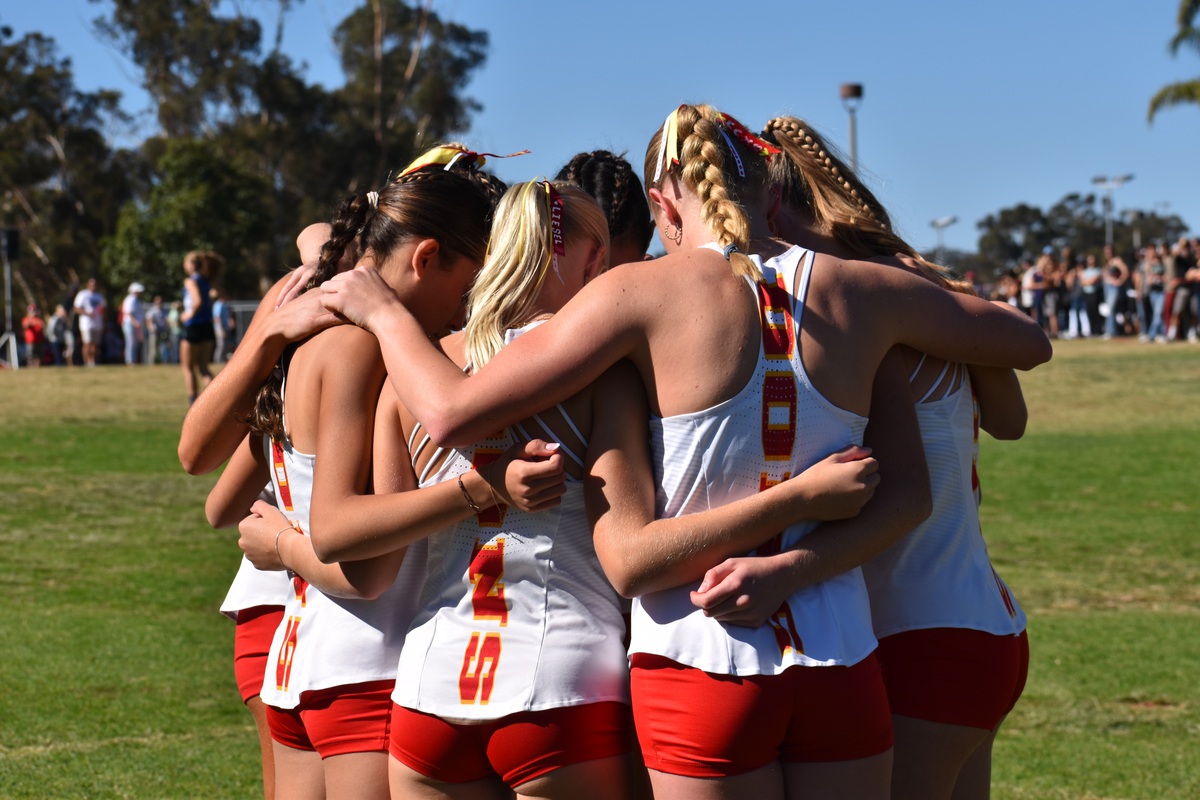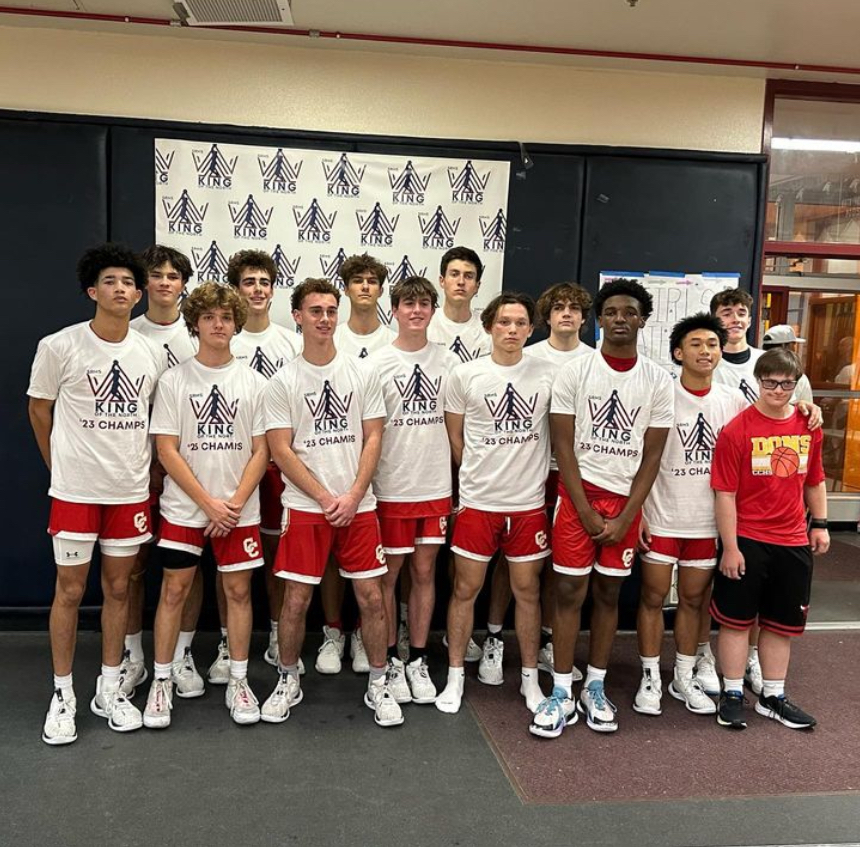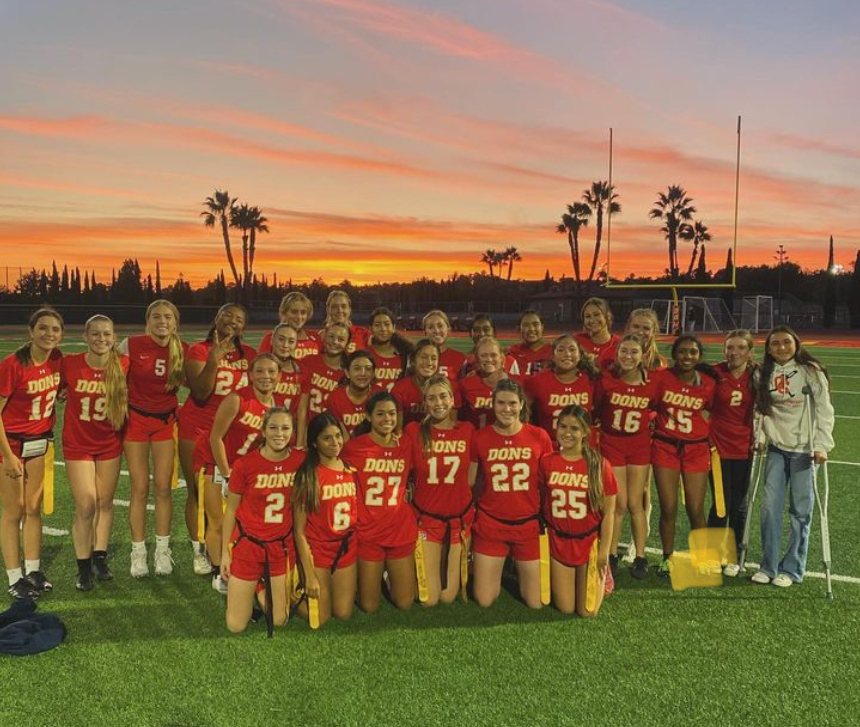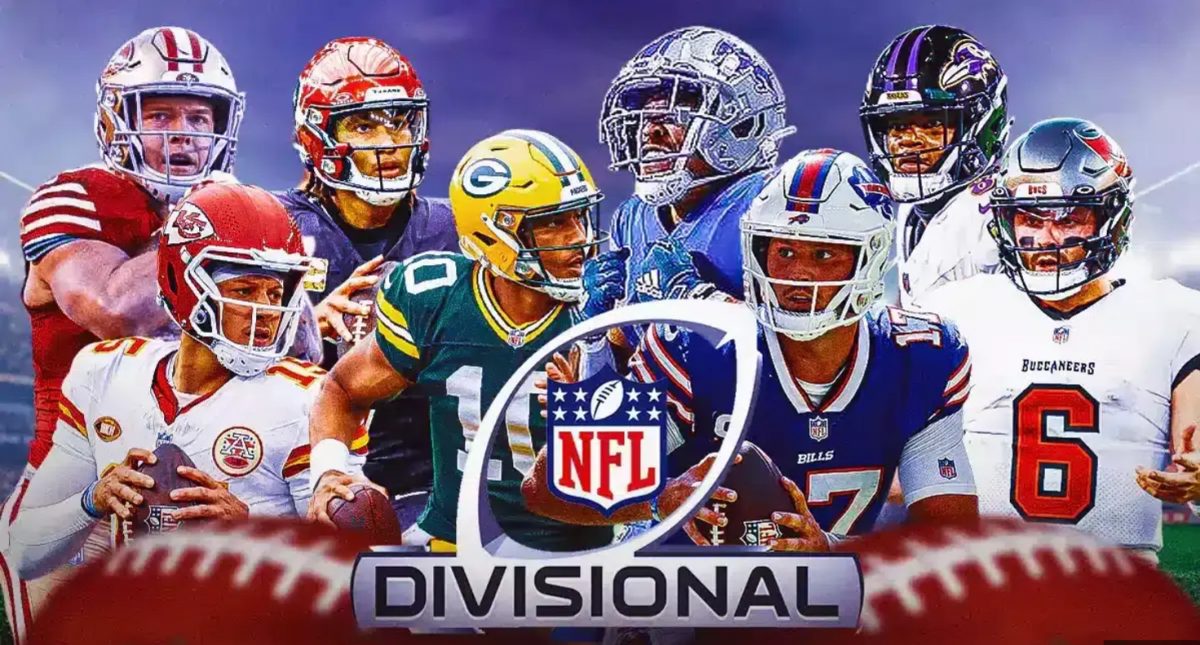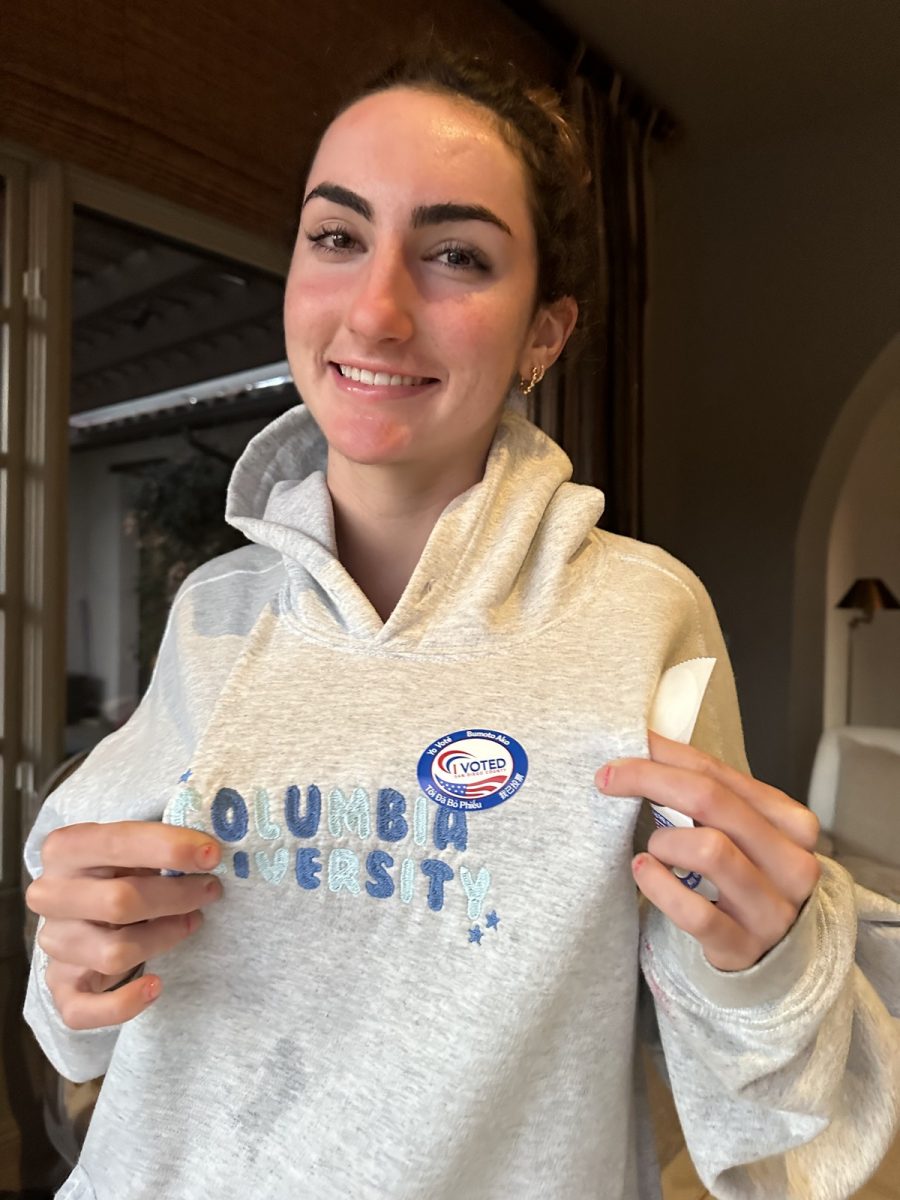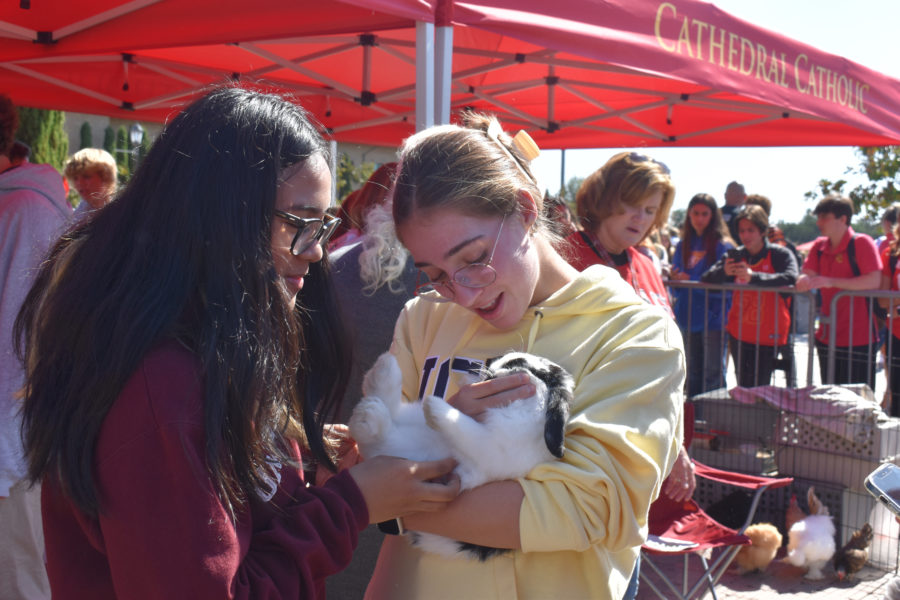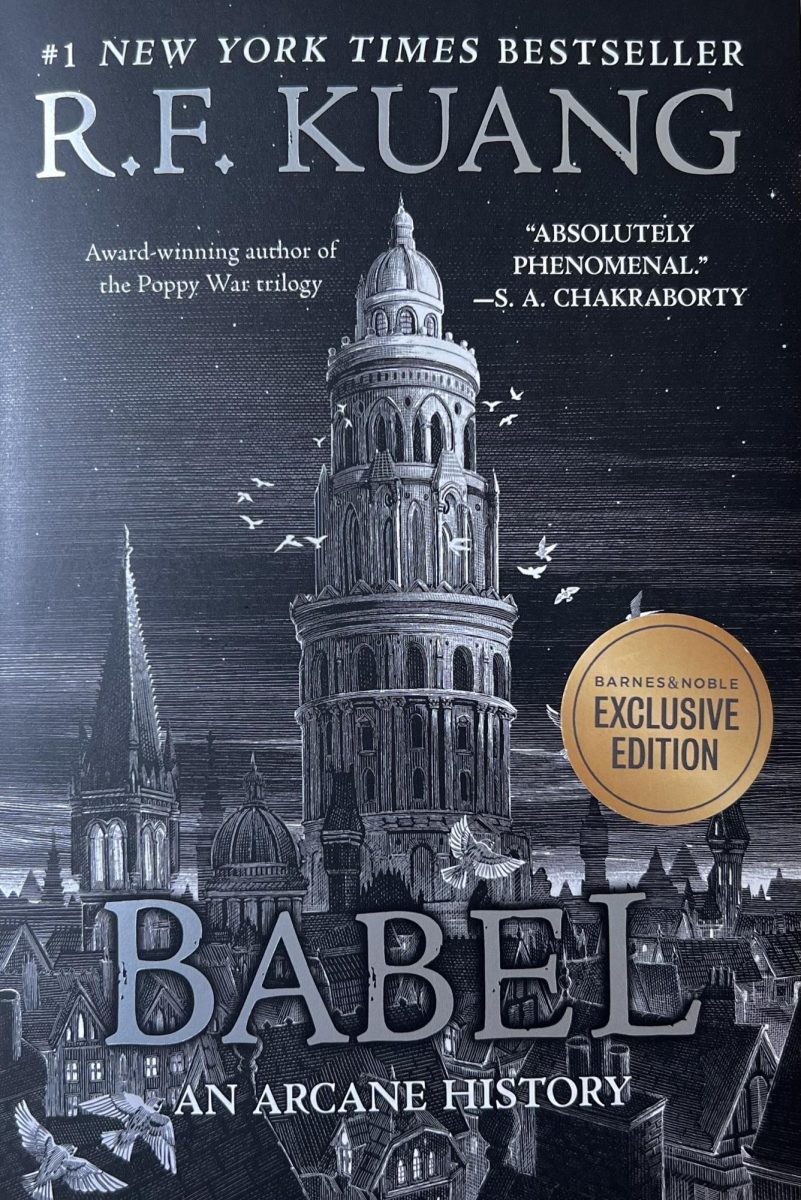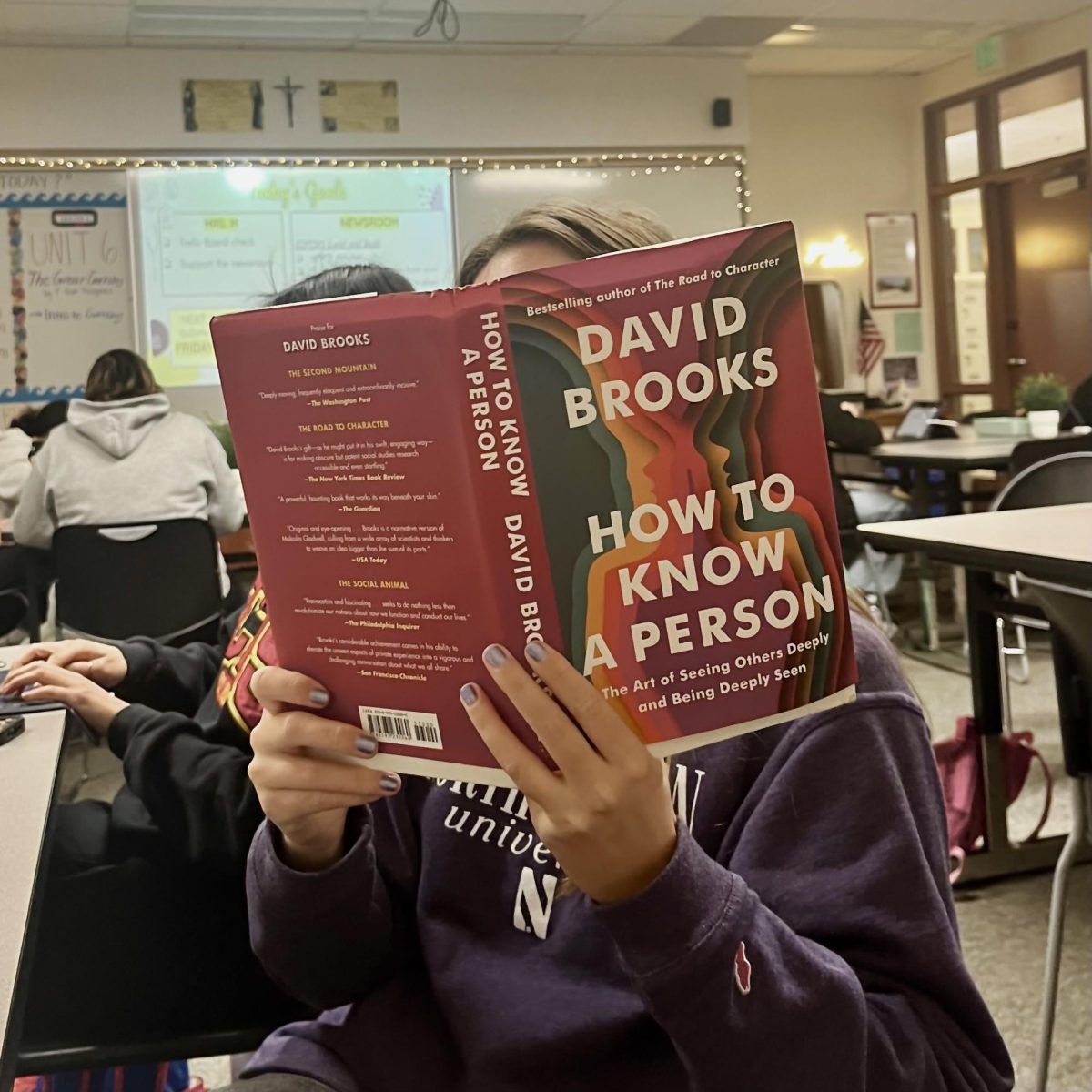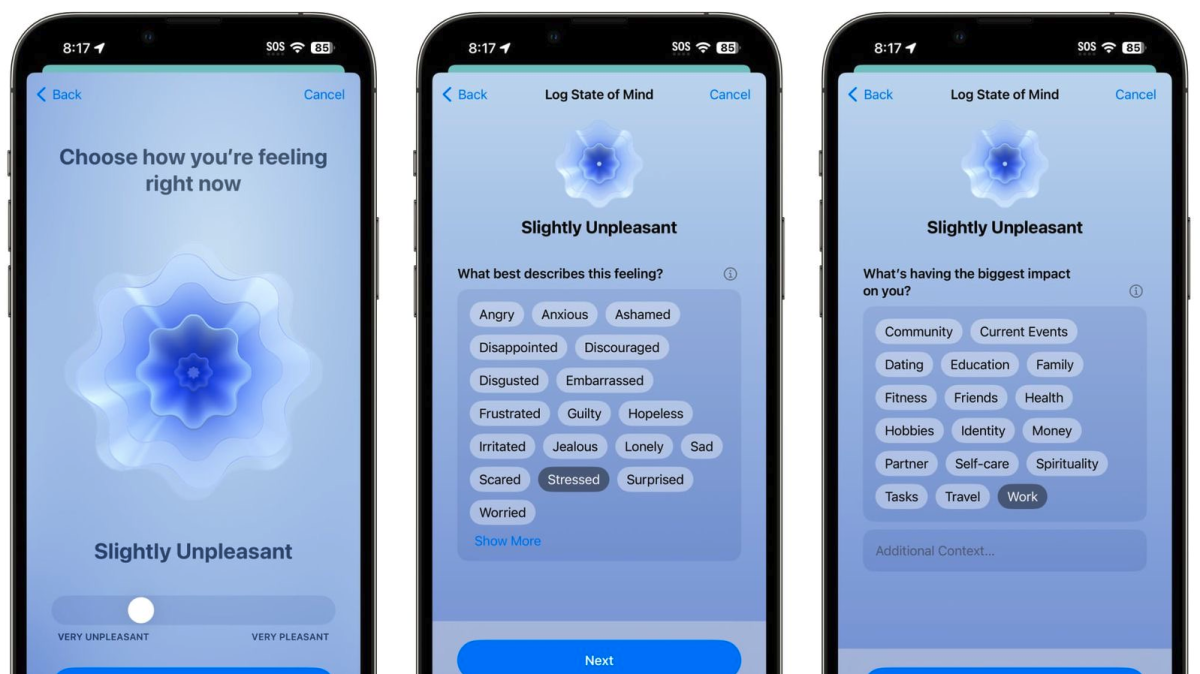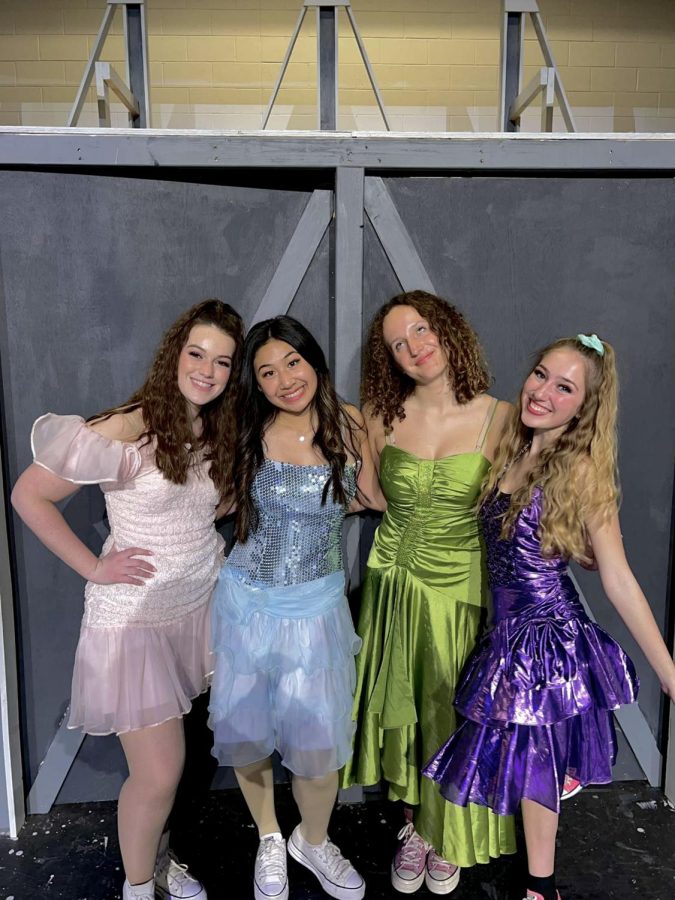Behind the Scenes: Callbacks
Photo of Collein Lyons (pink), Allie Adajar (blue), Serena Goeriz (green), and Jaedyn O’hara (purple). The cast of “Footloose” took photo at intermission of their closing show to capture the memory of the amazing show that occured in the spring of 2022 last year.
A few weeks ago, Ms. Wilson announced the winter and spring musicals and, shortly after, conducted auditions for anyone who desired to be in the musical. Last week, the callbacks were announced and began shortly thereafter. A callback means that the director would like to see an actor again, perhaps to hear them read from the script or see them next to another actor. Receiving a callback does not guarantee you a part in the show, and not receiving one doesn’t necessarily mean you won’t be cast. The call back process is different for everyone, so we asked Allie Adajar, a member of the Cathedral Catholic Drama Program, for an inside look on the preparation, techniques, and strategies behind callbacks.
When asked about the preparation process for callbacks, Adajar explains, “Ms. Wilson sends out an email containing all the information I need: what roles I’m called back for/being considered for, what songs I will need to sing for her, and what scenes I will need to act out. I listen to the songs on repeat and I annotate my scenes, writing my emotions and acting choices for each line in the script.” She continues on to say how she begins preparing as soon as possible, right after she finds out her callbacks, explaining how, “It’s important to be really familiar with the material before going into callbacks, and it’s even better if you have it all memorized. This shows dedication to the character and good work ethic, as well as displaying how well I play the part with my singing, dancing and acting.”
A role can be made challenging depending on the complexity of the character one is portraying. Adajar states, “The more complex the character or scene, the harder it is to put myself in their shoes and try to feel what they are feeling in that story. But it’s an incredible feeling once I break down those barriers and I’m able to truly become that character onstage. The most challenging aspect for me as an actor is to always stay in character. There are a lot of disturbances from the audience and from other people on stage with me, and it takes a bit of effort to stay in my character’s mindset despite all of the environmental factors distracting me.”
Callbacks can be an emotional roller coaster, and for most, trying out for a musical is a really nerve-wracking experience. Candidates feel nervous that they may mess up and feel intimidated by all the great contenders who are also in the running for the role they want. One also experiences a feeling of gratitude for the opportunity to be considered, as well as being happy to spend some time with friends as they practice together in an attempt to make the waiting a little more bearable. For Adajar, “The most exciting part of callbacks is doing chemistry readings with the other actors. It’s interesting to perform alongside my friends as we embody various characters and try to interact in different ways than usual.”
Check out the cast lists for “Cinderella,” and “Amelie,” on Schoology and the CCHS Drama Instagram to find out when the shows will be taking place and be sure to keep an eye out for Allie Adajar on stage!
